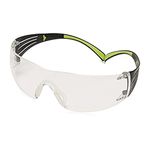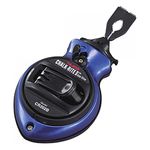Q:
My two partners and I have been building large custom homes for about 15 years, and we need you to settle an argument about bridging. Our senior partner prefers to use 2×10 or 2×12 solid blocking between joists, and we junior partners favor metal bridging. We think that metal bridging is much easier to install and accomplishes the same thing as solid blocking. Also, solid blocking seems more likely to cause squeaks because of all the extra joints and nails required for installation. Is one type of bridging better than the other?
Jim Greene, Cookeville, TN
A:
Chris DeBlois, a structural engineer with Palmer Engineering of Chamblee, Georgia, replies: In a word, no. I don’t know of any research that has drawn hard and fast conclusions on the various methods of bridging and blocking. But even if such research has been done, I doubt the results would make the headlines because I don’t think there is much difference between the types of bridging. From a structural perspective, you are correct: Solid blocking and metal (or wood) X-type bridging do accomplish the same task.
The blocking or bridging between joists (or rafters) also contributes to this phenomenon. For example, with bridging installed between joists, a piano leg sitting over one 2×10 is actually supported by several. The weight of the piano is centered over a single joist, but the bridging transfers some of the weight to the adjacent joists. So the floor deflection under the piano leg is much less if four or five joists are bridged together to share the load than if bridging has been left out and one joist has to carry the whole load.
But what’s the best bridging system? If properly installed, solid blocking, any style of metal X-type bridging and wood X-type bridging again are equivalent in my book. The choice comes down to the details you described: which system is easiest to install, squeaks the least and holds up the longest.
I think 1×4 X-type bridging is the best option for a number of reasons. First, it’s a little less demanding to install this bridging adequately. If a piece is slightly short, it can be attached a little higher up from the bottom of the joist and still do its job just fine. On the other hand, solid blocking should be cut precisely to length and is less effective if the nails have to bridge a gap between the bridging and the joist.
Another drawback to using solid blocking is that it sometimes creates a hump in the floor if the blocking and the joists shrink at different rates. X-type bridging does not suffer from this problem.
Finally, X-type bridging interferes less with wiring and plumbing systems than solid blocking does. Too often, pieces of solid blocking are removed and not replaced by plumbers and electricians. X-type bridging is less likely to be taken out in the first place, and if it is removed, it’s much easier to replace around the wiring or the pipes than solid blocking is.
The bottom line is that any of these systems installed properly will work just fine. The final choice is based more on personal preference than proven superiority.
Fine Homebuilding Recommended Products
Fine Homebuilding receives a commission for items purchased through links on this site, including Amazon Associates and other affiliate advertising programs.

Protective Eyewear

Portable Wall Jack

Tajima Chalk Rite Chalk Line



























View Comments
Keep working on this post!
Based on the Q and the A, I;m reflecting upon a few points:
1) what is the more efficient fixing (as opposed to easiest to install), screw or nail and what type?
2) Retrofitting blocking is very common due to lack of them in the past. How to account for the joists that do not have anymore a precise vertical shape, i.e. length at the top of the joist may be different than then mid or low parts of the joists. Which method would give the highest flexibility of installation? My understanding is X type but wood or metal?
3) if a solid blocking has been installe but with small gaps due to it being not a precise cut (old joists making this difficult), is there a way to do a repair (i.e. wood filler or resin?). Example attached.